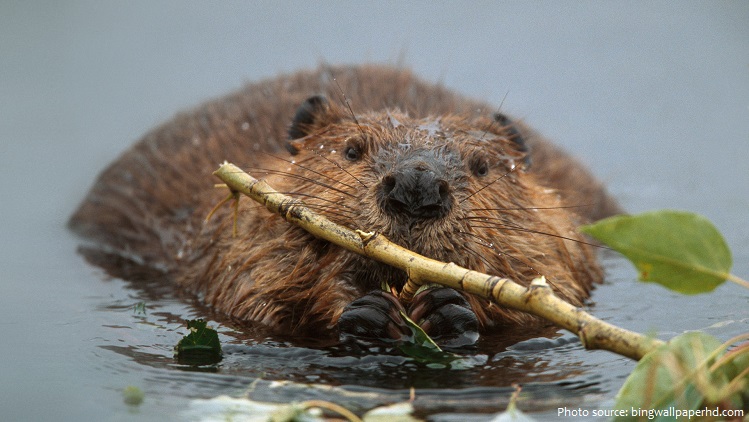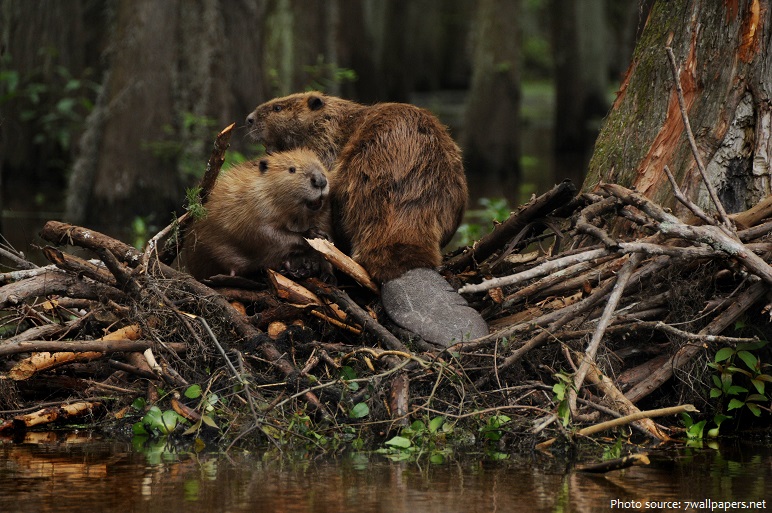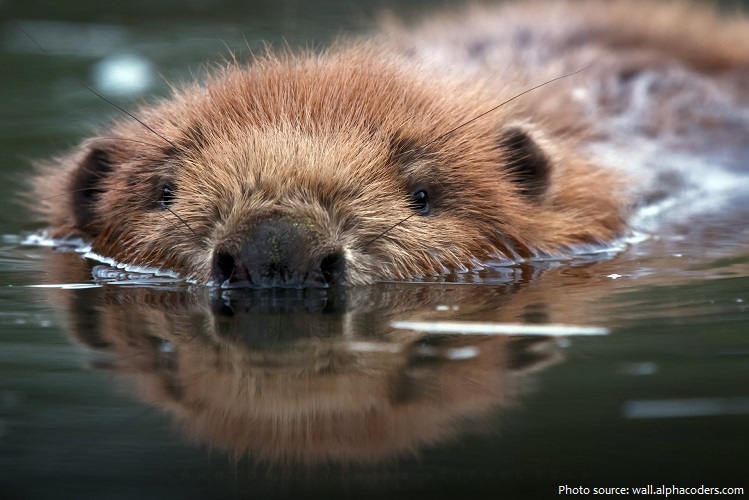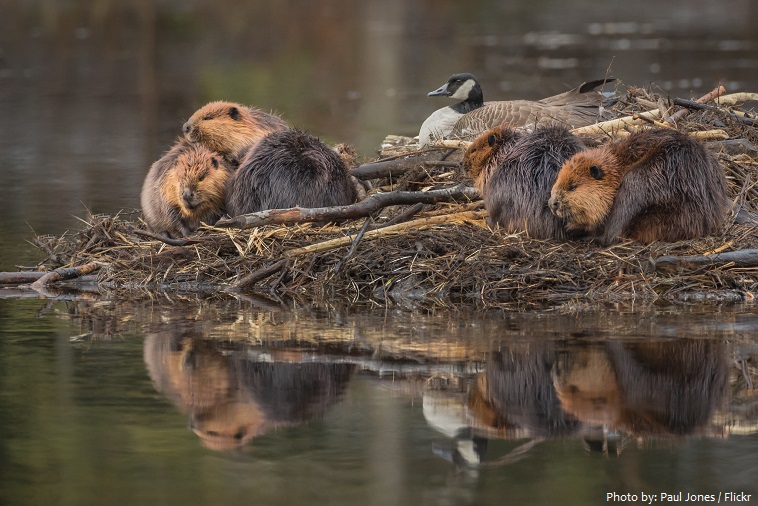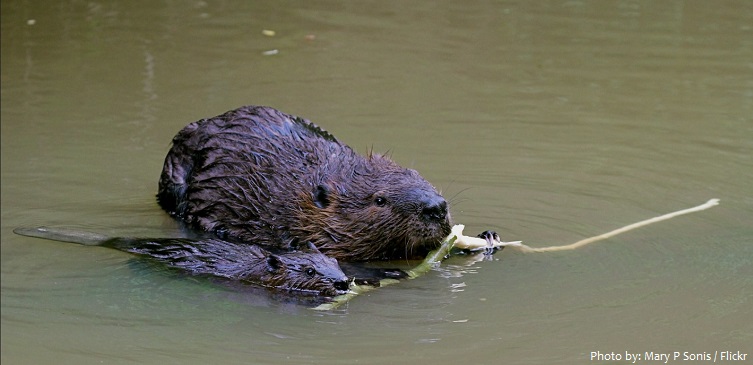The North American beaver is one of two extant beaver species.
It is native to North America and introduced in South America and Europe.
North American beavers live in rivers, ponds, streams, and small lakes.
They usually live between 10 and 20 years in the wild, but may live up to 30 years in captivity.
This beaver is the largest rodent in North America and competes with its Eurasian counterpart, the European beaver, for being the second-largest in the world, both following the South American capybara. The European species is slightly larger on average but the American has a larger known maximum size.
The head-and-body length of North American beavers is from 74 to 90 cm (29–35 in), with the tail adding a further 20 to 35 cm (7.9–13.8 in) and they usually weigh from 11 to 32 kg (24 to 71 lb), with 20 kg (44 lb) being typical.
The beaver’s fur consists of long, coarse outer hairs and short, fine inner hairs. The fur has a range of colors, but usually is dark brown.
The North American beaver is semiaquatic and has many traits suited to this lifestyle. It has a large, flat, paddle-shaped tail and large, webbed hind feet.
They swim at a speed of 3.2 km/h (2 mph), but if they are getting chased they can go up to 9.6 km/h (6 mph).
Beavers are best known for building lodges of sticks and mud. Lodges are an oven-shaped houses of sticks, grass, and moss, woven together and plastered with mud. They may be surrounded by water, or touching land, including burrows dug into river banks.
They are also well known for building dams. The purpose of dams is to create deepwater refugia enabling the beaver to escape from predators. When deep water is already present in lakes, rivers, or larger streams, the beaver may dwell in a bank burrow and bank lodge with an underwater entrance. The beaver dam is constructed using branches from trees the beavers cut down, as well as rocks, grass, and mud.
North American Beavers are active mainly at night. They are excellent swimmers and may remain submerged up to 15 minutes. More vulnerable on land, they tend to remain in the water as much as possible. They use their flat, scaly tail both to signal danger by slapping the surface of the water and as a location for fat storage.
North american beavers are herbivores. Their favorites include willow, maple, poplar, beech, birch, alder,and aspen trees. They also eat water vegetation, as well as buds, and roots.
Beavers usually live in family groups of up to 8 related individuals called colonies. The younger siblings stay with their parents for up to 2 years, helping with infant care, food collection, and dam building. Communication is highly developed in beaver, including scent marking, vocalization, and tail slapping. Beaver families are territorial and defend against other families.
Beavers are monogamous, but if one mate dies, the other will “remarry”, or seek out a new mate. Beavers are driven away from their colonies usually around their second year of life, right before a new litter is born. They then make a colony of their own, usually several kilometers away, and they first breed around their third years of life, give or take a year depending on the quality of the environmtnt.
North American beavers have one litter per year. The gestation period is about 3 months. They have a range of 3 to 6 kits per litter. Kits remain in the lodge for a month, afterwards leaving for longer periods of time to swim and take in solid foods.
In 1500’s fur trading began and it was a important role in the United States and Canada for more than 300 years. It was when the Indian and the Europeans exchanged goods. The Indians exchanged fur for tools and weapons.
Today, according to the International Union for Conservation of Nature (IUCN), North American beaver are not considered endangered.
The North American beaver is an official animal symbol of Canada and is depicted on the Canadian nickel.
This beaver was also featured on the first Canadian postage stamp, the Three Penny Beaver, which is considered the first postage stamp to show an animal instead of a head of state.
It is also the state animal of Oregon and New York of the United States.


